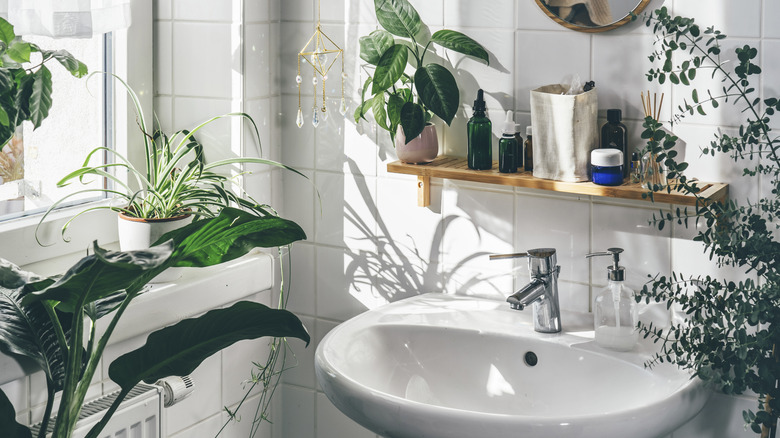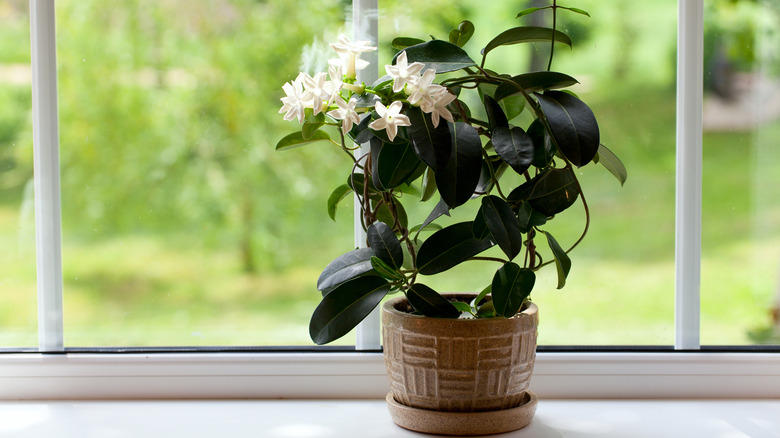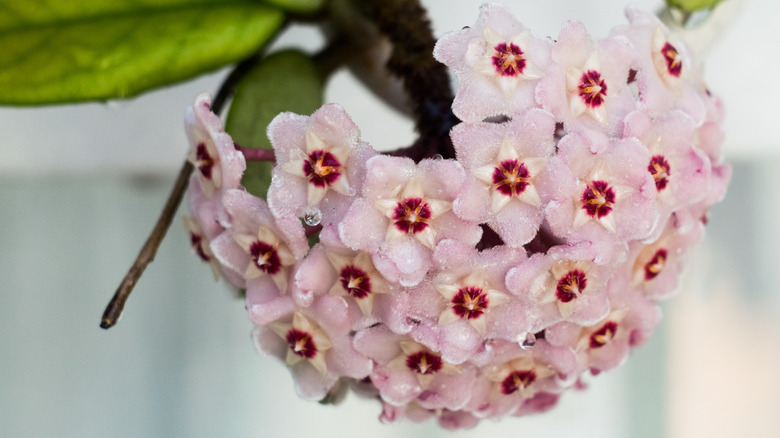Plants To Keep In A Bathroom With An Aromatherapy Bonus
If you're looking to create the perfect spa-like bathroom, it's important to make your space smell as relaxing as it feels. Air fresheners are a temporary fix, but there's a scent solution that's as natural as it is beautiful: house plants! Getting the right plants can give your bathroom the aromatherapy boost you've been looking for.
One of your best-smelling plant options is the lemon button fern (Nephrolepis cordifolia 'Duffii'). It's a dwarf variety of the Boston fern, which is known for its abilities to absorb moisture from the air and decrease the mold in your home. But unlike other ferns, the lemon button fern is slightly less finicky; it will be happy as long as it gets medium indirect light and its soil stays constantly moist, which is easy to maintain in a high-humidity environment like a bathroom.
The lemon button fern's ability to absorb excess moisture can help it relieve the unexpected culprit of bathroom odor: that damp towel smell. And even better, it smells like its namesake— if you crush or rub its leaves, it gives off a lemony scent. Who needs to light a scented candle when you can touch a houseplant for the same effect?
How to grow jasmine in your bathroom
The lemon button fern isn't the only plant that will leave your bathroom smelling as fresh as can be. If you have enough natural light, consider growing jasmine in your bathroom. There are around 200 species of jasmine in the genus of true jasmine, but your best bets for indoor growing are pink jasmine (Jasminum polyanthum) and Arabian jasmine (Jasminum sambac).
To get that floral scent you know and love from perfumes and teas, you'll need your jasmine to flower. Pink jasmine flowers in January to early February, while Arabian jasmine can bloom intermittently all year long when raised indoors. Jasmine requires a lot of light— at least six hours of sunlight daily— so this likely isn't a plant that will grow and thrive in a windowless bathroom. Natural light works best, since jasmine needs darkness after sundown in order to flower. Depending on which variety of jasmine you have, it may need to be placed in cooler, dryer conditions during winter months to encourage it to bloom in the spring.
Jasmine loves the humidity of bathrooms, but needs well-draining soil in a pot with a drainage hole to keep the balance between healthy moisture and over-watering. It may be a little more care-intensive, but the extra care is worth the work when you get to smell fresh jasmine as you relax in the tub!
How to grow hoya plants in your bathroom
Ferns and jasmine are popular plant options, but don't underestimate the aromatherapeutic power of hoya plants, also known as wax plants or porcelain flowers. These tropical flowering plants thrive in warm and humid climates, which makes them an excellent choice for bathroom growing, and their tiny clusters of flowers will bring natural beauty to your space.
Over 500 species have been named, and with different types of hoya come different scents, ranging from the sweet scent of Hoya publicayx to the cinnamon-y scent of Hoya cumingiana. Hoya plants' flowers bloom in warm weather, typically for about a week at a time between June and September, but its waxy leaves are evergreen. The flowers' scent is usually strongest at night, so enjoy a nighttime shower for maximum scent appreciation.
There are a few key things you should know about hoya plants before planting. While hoyas are tropical and love humidity, they can still be over-watered to the point of root rot, so be sure to use a well-draining soil so it doesn't become waterlogged. Most hoya plants need to dry out completely between waterings and get bright but indirect sunlight for at least two to six hours a day. Using a fertilizer that's high in phosphorus can improve bloom, which lets you take in more of your hoya's pleasant floral aroma.


